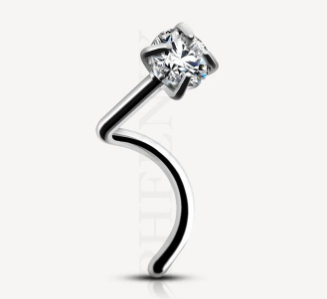Body piercing has been practiced for centuries as a form of self-expression, cultural tradition, and personal adornment. Nipple piercings, in particular, have gained popularity as a bold and empowering fashion statement. Among the diverse range of nipple piercing options, heart-shaped nipple piercings have emerged as a unique and artistic choice. In this comprehensive guide, we'll explore the world of heart-shaped nipple piercings, delving into the aesthetics, symbolism, and considerations associated with this captivating body modification.
The Artistry of Heart-Shaped Nipple Piercings
Nipple piercings have long been celebrated for their versatility and ability to enhance one's body aesthetics. Heart-shaped nipple piercings take this artistry to the next level by transforming the nipple itself into an eye-catching work of body jewelry. Here's what makes heart-shaped nipple piercings so special:
Unique Aesthetics: Heart-shaped nipple piercings create an unforgettable visual effect. The jewelry is crafted in a way that forms a heart shape when both nipples are pierced. This unique design draws attention to the chest area, highlighting your individuality.
Symbolic Meaning: The heart symbolizes love, passion, and emotions. By choosing a heart-shaped nipple piercing, individuals often express their love for self-expression and body modification, as well as their confidence and self-assuredness.
Versatility: Heart-shaped nipple piercings can be customized to suit personal preferences. You can select from various materials, including surgical steel, gold, or titanium, and choose gemstones or other embellishments to match your style.
The Nipple Piercing Process
Before deciding to get heart-shaped nipple piercings, it's essential to understand the piercing process and what to expect:
Consultation: Visit a professional and reputable piercing studio for a consultation. They will assess your anatomy and discuss your preferences to ensure a successful piercing experience.
Sterilization: The piercing area will be cleaned and sterilized to minimize the risk of infection.
Piercing: A sterilized needle will be used to create the piercing. The process is quick and relatively painless for most individuals.
Jewelry Insertion: After the piercing is complete, the heart-shaped jewelry of your choice will be carefully inserted into the newly created holes.
Aftercare: Proper aftercare is crucial for the healing process. Follow your piercer's instructions, which may include cleaning, avoiding certain activities, and wearing loose-fitting clothing to prevent irritation.
Considerations for Heart-Shaped Nipple Piercings
Before getting heart-shaped nipple piercings, it's essential to consider the following factors:
Professional Piercer: Choose a skilled and experienced piercer who operates in a clean and reputable studio. Ask for recommendations, review portfolios, and inquire about their sterilization procedures.
Pain Tolerance: While the pain associated with nipple piercings is usually brief, it's important to consider your own pain tolerance and whether you're prepared for the discomfort during and after the piercing.
Healing Time: Nipple piercings can take several months to fully heal. Be prepared for the commitment of proper aftercare during this period.
Lifestyle and Activities: Consider how your new piercings may impact your daily life, including exercise routines, clothing choices, and intimate activities.
Jewelry Selection: Take your time to choose the heart-shaped jewelry that best reflects your personal style and preferences. High-quality materials and craftsmanship are essential.
Aftercare and Maintenance
Proper aftercare is vital to ensure your heart-shaped nipple piercings heal without complications. Here are some general aftercare guidelines:
Cleaning: Clean the piercing site with a saline solution or a mild, non-alcoholic, non-iodized saline solution twice a day.
Avoid Irritants: Avoid harsh soaps, lotions, or creams near the piercing, as they can irritate the healing tissue.
Hands Off: Refrain from touching or twisting the jewelry to prevent contamination or injury to the healing tissue.
Clothing: Wear loose-fitting, breathable clothing to minimize friction and irritation.
Health: Maintain a healthy lifestyle with proper nutrition and hydration to support the healing process.
Checkups: Schedule follow-up appointments with your piercer to monitor the healing progress and address any concerns.
For More Info:-





Comments